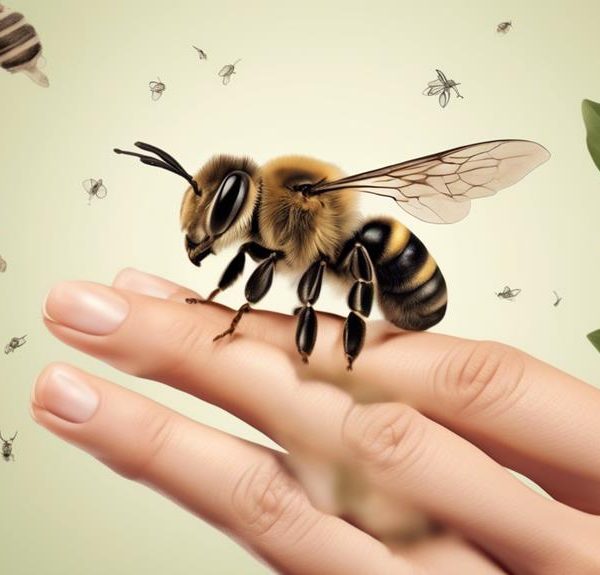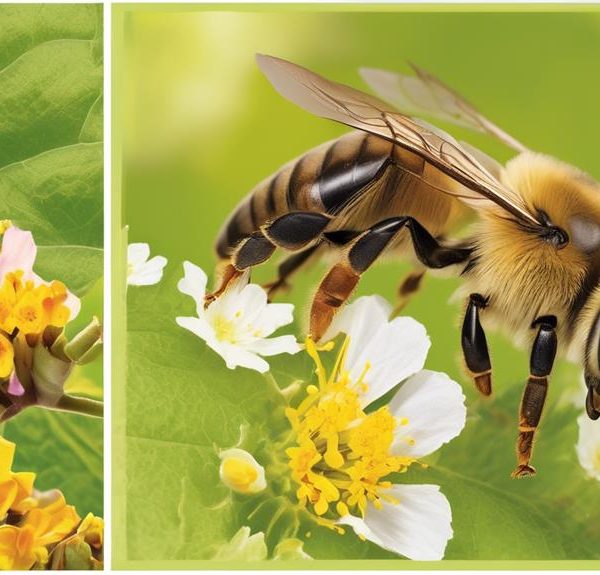Alfalfa leafcutter bees, essential to global agriculture, select unique habitats for nesting, but where exactly do they dwell?

Where Do Alfalfa Leafcutter Bees Live
Sure, you're thinking, 'What I need in my life right now is to know where alfalfa leafcutter bees live,' because priorities, right?
Before you dismiss the thought, consider that these bees have a significant role in our ecosystem and agriculture. They're native to Europe but have been intentionally introduced to other parts of the globe, including North America, to enhance alfalfa production.
They're not your average city dwellers, preferring certain habitats for their unique nesting habits. But where exactly do they set up shop?
Well, for that intriguing bit of information, let's venture a little further.
Key Takeaways
- Alfalfa Leafcutter Bees have a wide geographic distribution, including North America, Europe, Asia, and Australia.
- They prefer soft, rotting wood or plant stems as nesting sites, but can also occupy man-made structures like wooden blocks or tubes.
- Leafcutter Bees can be found in various habitats, including grasslands, gardens, and urban areas.
- Conservation efforts should focus on providing artificial nesting sites, limiting pesticide exposure, preserving natural habitats, and integrating green spaces into urban planning.
Understanding Alfalfa Leafcutter Bees

To truly grasp the nature of Alfalfa Leafcutter Bees, it's crucial to delve into their unique biology, intricate behavior, and the distinct environmental conditions they thrive in. Known scientifically as Megachile rotundata, these bees are solitary creatures with a fascinating lifecycle. Unlike honeybees, a leafcutter bee's existence isn't centered around a hive or queen. Instead, each female is an independent entity, capable of reproducing and providing for her offspring.
You'll often find these bees in areas abundant with alfalfa, their primary food source. They've evolved to act as pollinators for these specific plants. They exhibit an interesting behavior known as 'buzz pollination', where they vibrate their bodies at a high frequency, effectively shaking the pollen loose from the flower.
Their nests, typically found in pre-existing holes in wood or stems, are fascinatingly complex, with each chamber lined with leaf pieces and filled with a mixture of pollen and nectar. This serves as food for the growing larvae. The bees' unique biology and behavior, coupled with their specific environmental needs, make them a fascinating subject for scientific study. Understanding them is key to protecting their role in our ecosystems.
Geographic Distribution of Leafcutter Bees
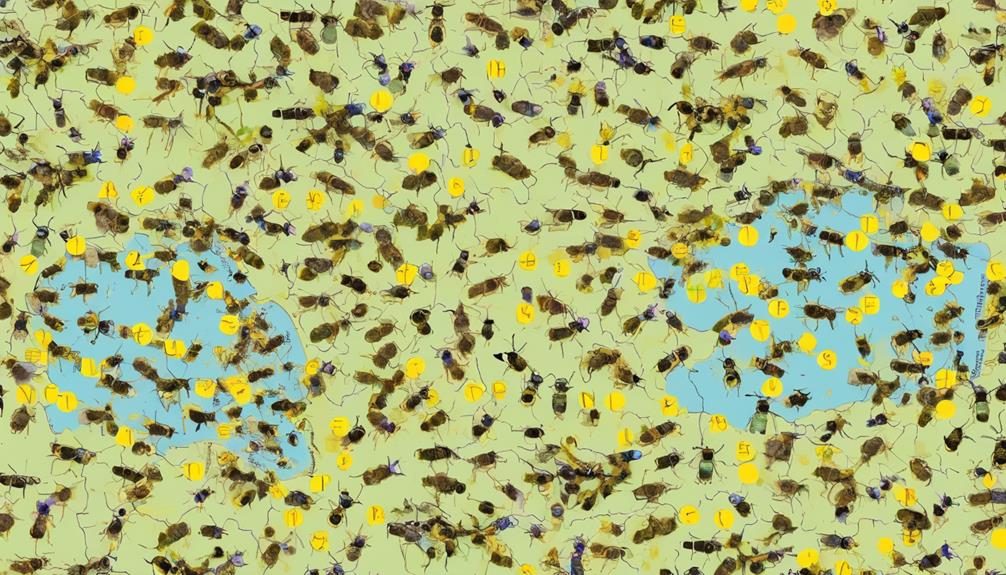
You might be surprised to learn that Alfalfa Leafcutter Bees, despite their specialized niche, have a wide geographic distribution, spanning multiple continents and diverse climates. They're not confined to any particular location, instead, they flourish in various regions, proving their adaptability and resilience.
Continent | Climate | Alfalfa Leafcutter Bees Presence |
|---|---|---|
North America | Temperate | High |
Europe | Mixed | Moderate |
Asia | Diverse | Low |
Australia | Varied | Low |
North America, particularly the US and Canada, host a significant population of these bees due to the large-scale cultivation of alfalfa crops. In Europe, their presence is moderate given the mixed climate and varying farming practices. Asia and Australia, despite their diverse climates, have a lower prevalence. The distribution pattern is largely influenced by the availability of their preferred habitat: alfalfa fields.
Understanding the geographic distribution of Alfalfa Leafcutter Bees is essential in their conservation efforts, particularly in the face of climate change and habitat loss. Recognizing the environments they thrive in can aid in creating better strategies for their preservation and, in turn, maintaining the health of our ecosystems.
The Unique Habitats of Leafcutter Bees
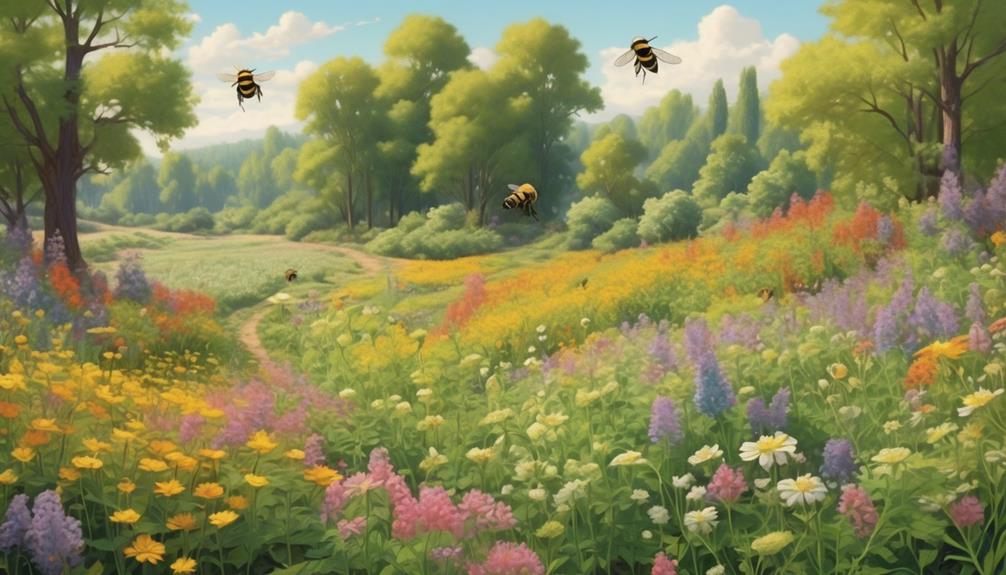
Diving deeper into the world of Alfalfa Leafcutter Bees, it's worth noting that these fascinating insects choose some rather unique habitats to call home. Unlike honeybees that form colonies, leafcutter bees are solitary creatures. They prefer to make their homes in soft, rotting wood or the stems of plants. They're also known to occupy man-made structures such as wooden blocks or tubes, particularly those with a diameter of about 6-10 mm.
These bees are quite particular when it comes to choosing their nesting sites. They look for locations that provide a suitable substrate for their nests, are safe from predators, and have a rich source of food nearby. Their nests are comprised of a number of cells, each containing a single egg along with a mixture of nectar and pollen. This mixture, known as bee bread, serves as a food source for the developing larvae.
The habitats of leafcutter bees can range from grasslands to gardens, and even urban areas. Despite their preference for certain conditions, these bees are quite adaptable. This adaptability, combined with their non-aggressive nature and significant contribution to pollination, makes leafcutter bees a welcomed guest in many environments.
Leafcutter Bees and Agriculture
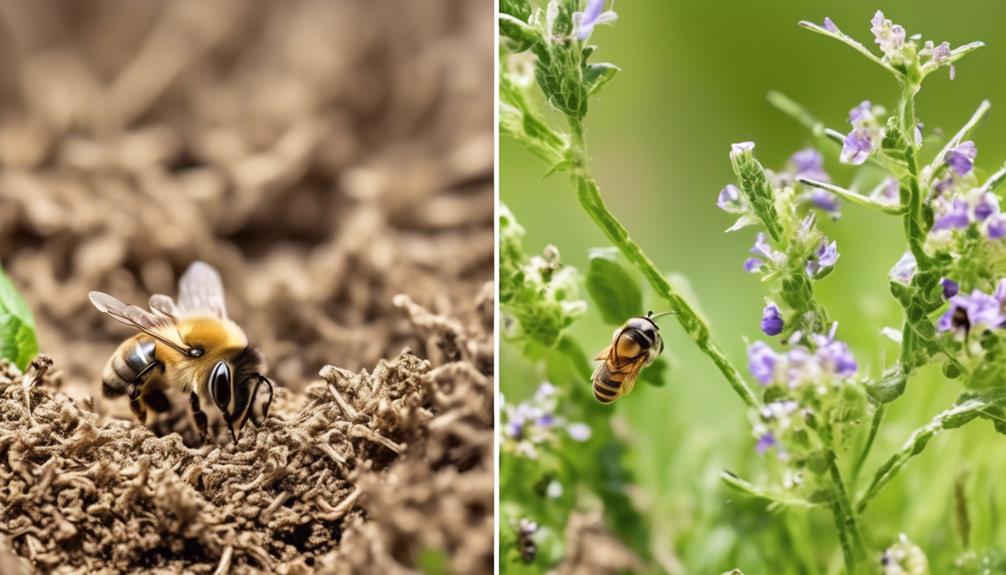
While leafcutter bees thrive in diverse environments, their significant role in agriculture, specifically in the pollination of alfalfa crops, is particularly noteworthy. Unlike honeybees, which collect pollen on their hind legs, alfalfa leafcutter bees carry pollen on their abdomens. This unique trait makes them more effective pollinators of alfalfa, a crop that requires a certain amount of force to unlock its pollen.
You'll find that leafcutter bees can significantly increase alfalfa crop yields. They're more resistant to pesticides than honeybees, making them a more reliable choice for many farmers. Furthermore, they're solitary bees, which means they don't require a hive. Instead, they lay their eggs in existing holes in wood or plant stems. It's this adaptability that allows them to thrive in both wild and cultivated landscapes.
However, it's important to manage these bees carefully. Overuse of pesticides can still harm them and damage their populations. Plus, if the bees don't have enough leaf material for their nests, they mightn't reproduce as effectively. So, while they're a boon to agriculture, they still need a balanced ecosystem to survive and thrive.
Conservation of Alfalfa Leafcutter Bees

Given their crucial role in alfalfa production, it's essential to prioritize the conservation of alfalfa leafcutter bees. These bees aren't just industrious pollinators; they're integral to our agricultural systems. Without them, alfalfa yields would drastically decline, impacting livestock feed supplies and disrupting food chains.
To conserve these bees, you should first understand their needs. They prefer nesting in pre-existing holes within wood or plant stems, so providing artificial nesting sites is a beneficial strategy. These sites can be simple drilled holes in wood or bundles of hollow plant stems. This helps increase their population and ensures a steady supply of pollinators for alfalfa crops.
Pesticide exposure is another significant threat to their survival. It's vital to limit their contact with harmful chemicals. Using organic methods or timing pesticide applications when bees aren't active can mitigate the risk.
Lastly, habitat loss due to urbanization is a pressing issue. Preserving natural habitats and integrating green spaces into urban planning can provide bees with the resources they need to thrive.
Conclusion
In summary, you've discovered that Alfalfa Leafcutter Bees, widespread across various geographies, inhabit unique habitats and play a vital role in agriculture. Their contribution to alfalfa cultivation is undeniably significant.
However, their survival is under threat, necessitating concerted conservation efforts. Understanding these bees promotes their preservation and, by extension, the health of our ecosystems.
So, the next time you see a leaf with a perfect semi-circle cut out, you'll know who to thank.

